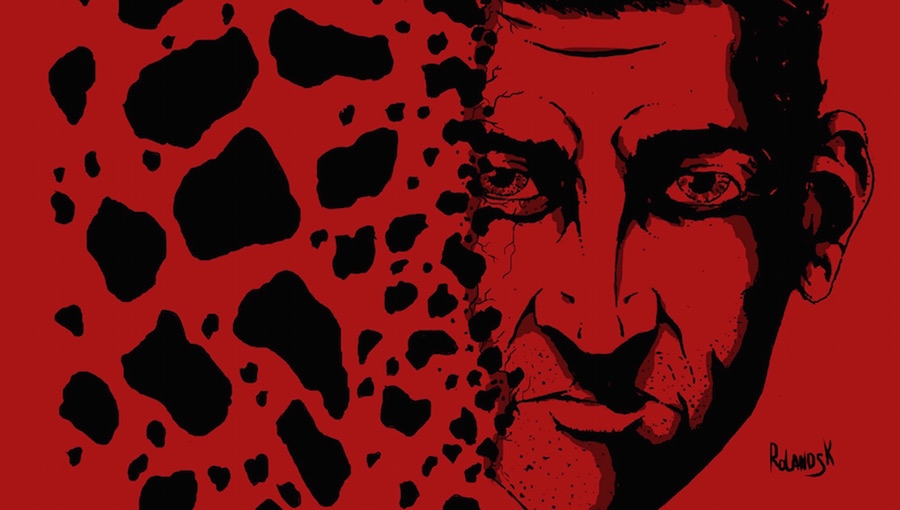One of the things in this world that not enough people talk about is mental illness. It’s the “hush-hush” conversation, unless it’s altogether avoided. The stigma that mental illness carries with it is so great, it seems that time has not yet been able to put much of a dent in the assumptions and prejudices associated with those suffering from one or more of them.
Tales of the Fractured Mind addresses these issues in a bold, unapologetic manner. It is like a graphic novel bringing prose poetry to life rather than a story, which is a good thing in this case. The book is divided into sections, each one dealing with a different mental illness, ranging from depression to PTSD to dementia. It even addresses the effects bullying has on a person’s mental health and self-esteem. In the sections, the character depicted that has the mental illness gives a soliloquy about how they are affected by their particular ailment.
Writer Roddy McCance does a brilliant job of diving into each illness and, without reserve, telling the reader just how it is inside each character’s mind. The monologues are so realistic that there must have been a ton of research put into the graphic novel, along with thoughtfulness and caring. There were some I wish were longer (such as “Just Like Everyone,” which deals with Body Dysmorphic Disorder), but the stories still manage to get the point across with grace.
Even more difficult than writing about such a touchy topic and having it come out perfectly is drawing it. I do not envy Rolands Kalnins’ position of determining how to express each disorder through art. Yet, somehow, he does it perfectly. Every panel that accompanies the characters is breathtaking in its ability to capture the story. Even if one doesn’t read a single word from McCance, they can still easily surmise the premise of the book and understand each ailment to its fullest. The two sections that stand out to me the most for the art alone are “The Persistence of Depression” (Depression) and “Clock of the World” (Bi-Polar Disorder), despite every section being drawn beautifully.
McCance and Kalnins have taken a huge risk by tackling this topic head-on and so courageously. As someone who suffers from depression, I thank them both for this very important work of social art. Even if you do not suffer from a mental illness, chances are you know someone who does – even if they have never told you. This is a must-read graphic novel for anyone who wants to learn more about mental illness and to better understand those who deal with them every day.

